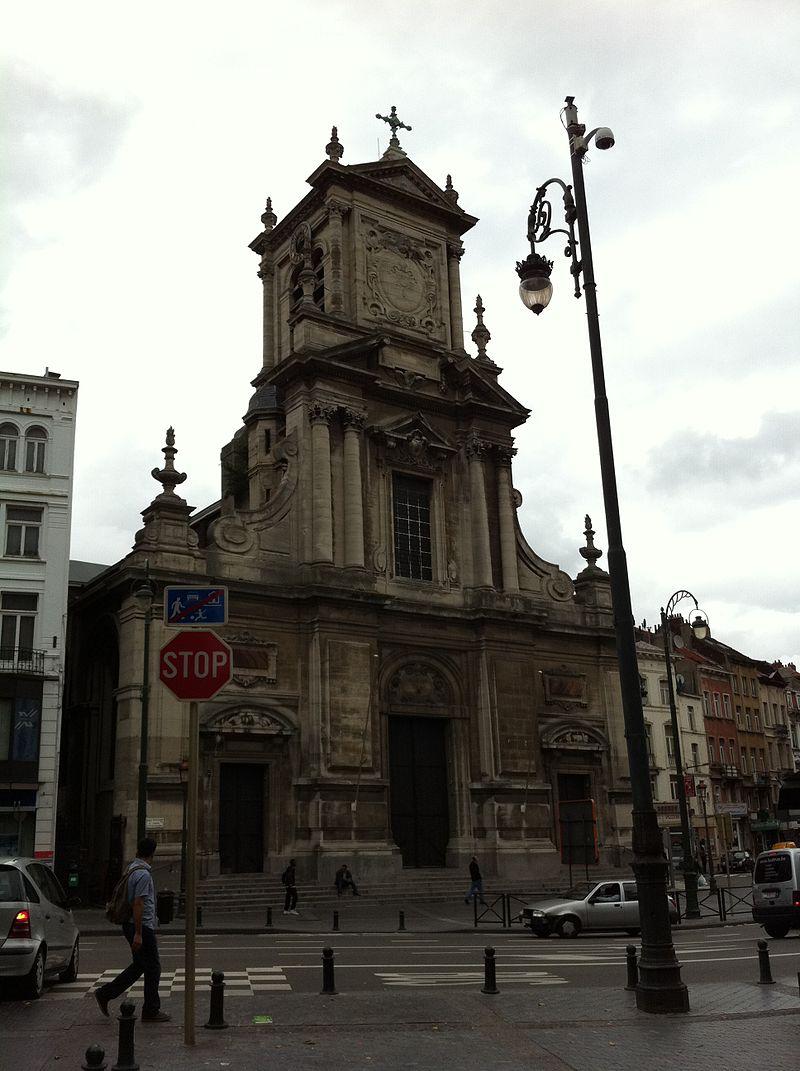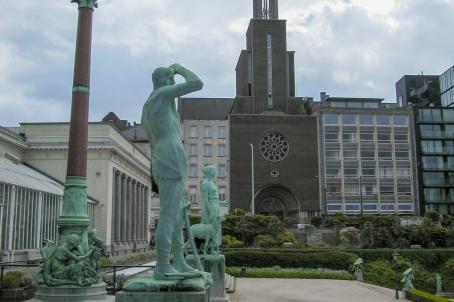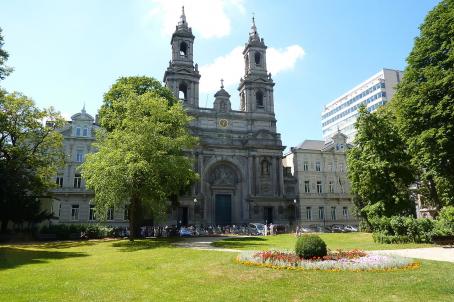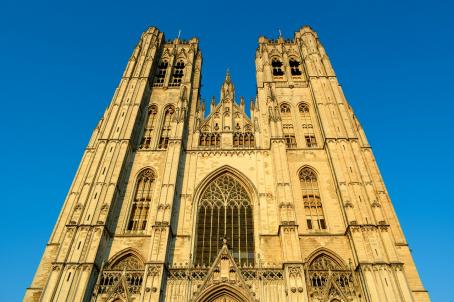Saint-Josse Church

The Saint-Josse church is a neo-baroque church built in 1867 by the architect Jules-Jacques Van Ysendyck. It is a listed monument since 2009.

The Saint-Josse church is a neo-baroque church built in 1867 by the architect Jules-Jacques Van Ysendyck. It is a listed monument since 2009.

The church of the Gesu was built in the 19th century and is now desacralized. From 1860 to 1865, Louis Pavot built a neo-gothic church for the neighbouring Jesuit community. Between 1937 and 1939, the church was enlarged with a façade on rue Royale, as the neo-gothic church is no longer visible from the street. The new brick façade was designed by the architect Antoine Courtens with a bell tower in a distinctly Art Deco style, while the entrance portal, with a wide arch, a tympanum and statues of the twelve apostles and surmounted by a rose window, retains a soberly traditional style.

The Church of St. Joseph is a Belgian national sanctuary dedicated to the country's patron saint, St. Joseph. The church was built from 1842 to 1849 as part of the development of the district. The church, with its blue limestone façade, matches the shape of the newly built Place Frère-Orban at the time, based on an urban project by the same architect. Since 2001, the church has been owned by the Society of Saint Pius X.

The Cathedral of St. Michael and St. Gudula, built between 1226 and 1519 in pure Gothic style. The cathedral was first founded as a collegiate church in 1047 in order to recover the relics of Saint Gudule hitherto kept in the church of Saint-Géry (destroyed during the French Revolution). It was only in 1962 that Brussels, until then dependent on the Archbishopric of Mechelen, was associated with this episcopal see under the title of Diocese of Mechelen-Brussels. Thus the collegiate church was promoted to the rank of cocathedral.